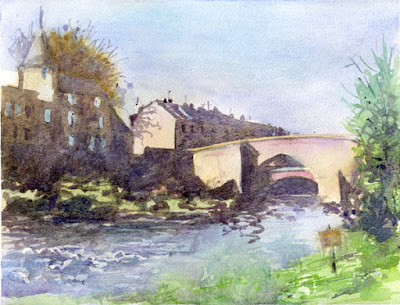Creating a watercolour painting takes some time and energy. Surely you don’t want your creations to fade, discolor, or otherwise deteriorate. While there are some things you can do such as not displaying your watercolours in the full sun and choice of products (ex. paper and framing), there are some choices you can make that relate to the use of pigments.
Some pigments fade for a variety of reasons - exposure to light is the main one, but acids and alkalis will damage many pigments. However, the prime consideration is the light-fastness of the pigments used in producing the paint.
Ideally we should try to used those paints whose pigments are rated good or excellent in light-fastness. The information is normally found on the label of paint tubes. However, it’s not always easy to read because the print is too small and its often displayed in “code”.
Winsor & Newton has an easy reference chart online to indicate the lightfastness and permanency and the colour pigment(s) used.
Although paint manufacturers provide this information on their website, it is normally found when looking at individual colours. Let me know if you find a table similar to the W&N one, that is easy to use as a reference tool.
I was disheartened when I found out that one of my favourite colour is one of the few colours that is only “moderately durable”. That colour is Rose Madder Genuine from W&N. What colour do you use instead for pink flowers?
Here is a link to some additional information on lightfastness. It may be a bit dated, but remains interesting to read. If you like the technical aspects of paint, focuss on the pigment ingredient number (e.x. cobalt blue - PB28) section.http://www.handprint.com/HP/WCL/pigmt6.html#lightfast
Today's art find is suggested by DragonGirl (from Art Tutor) and is Allan Kirk.
Have a great week,
Danielle

No comments:
Post a Comment
Would love to hear from you:
Note: only a member of this blog may post a comment.